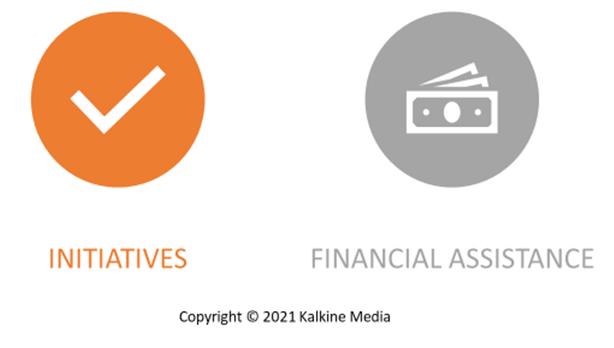Clean Natural Gas is a pipeline-gas that can be used interchangeably with conventional natural gas. It is an upgraded form of biogas produced using various sources like animal waste, crop residuals, food waste, organic wastes from farms and dairies, and other sustainable and renewable biomass sources.
While it is a carbon-neutral source , its main primary ingredient is methane, which is a more powerful greenhouse gas than CO2.
Clean natural gas is also known as Renewable Natural Gas (RNG) and Green Natural Gas.
Some major energy companies have started investing billions of dollars in clean energy projects and making the environment sustainable. Canadian firm Greenlane Renewables Inc. (TSX: GRN), for one, is known to provide biogas upgrading systems to decarbonize and cleans the transportation sector and natural gas grid. Its biogas upgrading systems are sold in the market under the Greenlane Biogas™ brand name.
Clean Natural Gas Production
Clean natural gas can also be termed as biogas or biomethane, which is conditioned on reducing or removing the non-methane elements. With a minor clean-up process, biogas can be used to generate heat and electricity. However, to use in vehicles, it needs to be processed at higher purity standards. The biogas can be produced from:
- Landfills: The landfills are made up of Municipal Solid Waste (MSW) collected from residential, industrial, and commercial entities. Landfill gas (LFG) is produced from the decomposition of the organic material in landfills. Landfill gas is composed of 45%-60% of methane, 40%-60% of carbon dioxide, and small amounts of non-methane organic compounds (NMOCs).

LFG can be stored, converted, and then used as a renewable energy resource. LFG is used in energy-based projects such as electricity generation, direct Use of Medium-BTU gas, and renewable natural gas (or clean natural gas).
- Livestock Operations: Animal waste can be used as a valuable source of renewable energy. Anaerobic digestion systems are used at livestock facilities to stabilize livestock manure and produce energy.
- Wastewater Treatment: The biogas is generated using anaerobic digestion technology at wastewater treatment plants to digest the sewage sludge. The sewage sludge is later converted to biogas.
About 121 anaerobic digesters were used for producing combined heat and power (CHP) and 86 anaerobic digesters for producing electricity out of a total of 273 anaerobic digesters used at livestock operations in the United States as of September 2020, according to Statista.
Benefits of Clean Natural Gas
- Economic Development: The increased production of clean natural gas will displace the requirements of petroleum products, thereby reducing imports. Reduction in imports will decrease the dependency on the rest of the world and the money saved from imports can be used to fulfil other requirements.
- Promoting Jobs: The development of clean natural gas will result in the creation of more jobs to design, construct and operate the plants. These setups will not be limited to urban areas and will capture the rural areas as well.
- Increased Energy Security: The diversification of energy supply by shifting to domestic clean natural gas instead of foreign oil supplies will protect the domestic country from price fluctuations, foreign competition, political conflicts, etc. A domestic clean natural gas system is less volatile and provides security with a domestic energy supply.
- Increase in Sustainable Waste Practices: As the world’s population grows, we must take significant steps to reduce the discarded products making their way to our waste streams. To ensure the waste is never truly wasted, the clean gas industry has taken some action steps by generating biogas from the decomposition of organic wastes.
- Change in Transportation Industry: Clean Natural Gas has shown the potential to change the transport industry as many transporters have already shifted to compressed natural gas (CNG) and liquid natural gas from petroleum-based fuels. By introducing clean natural gas, it will increase the need to shift to natural gas vehicles.
- Clean Air: Usage of clean natural gas in natural gas vehicles in place of diesel and gasoline, will reduce the air pollutants in the atmosphere. It will also help in reducing the harmful emissions from transportation that cause severe health diseases.
- Reduced Greenhouse Gas Emissions: While converting methane-rich biogas to clean natural gas or renewable natural gas, it avoids releasing carbon dioxide and methane into the atmosphere.
Government’s initiatives and financial assistance
The Canadian government has worked on some projects in terms of pursuing a green economy.

- Greener Homes: Helps the homeowners to make their homes more efficient and affordable to maintain. This initiative will also help in reducing greenhouse gas emissions and in moving towards a clean energy future.
- Energy Innovation Program: It focuses on the reduction of diesel use by industrial operators, the setup of renewable and smart storage systems, and reducing volatile organic compounds and methane in the atmosphere.
- Emissions Reduction Fund: To create a lower carbon economy and meet sustainable environment commitments, the government has created a C$750 million fund.
 Please wait processing your request...
Please wait processing your request...